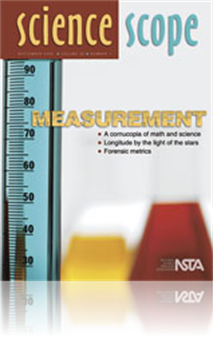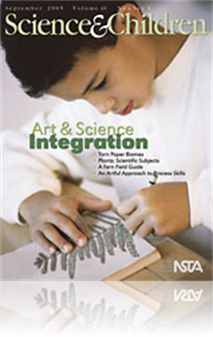All Resources
Journal Article
Science Sampler: Forensic metrics
Students have a blast pretending to be crime scene investigators as they use metric measurement for problem solving and inquiry in this exciting activity. Students use measuring equipment, collect data, and make inferences based on the evidence colle...
Journal Article
Science Sampler: Pick-a-number
The Pick-a-number activity, a variation of the game 20 Questions, provides a way to address challenges at the beginning of the school year, in a standards-based way. It also helps students develop the essential skill of asking questions as part of th...
Journal Article
The design of a classroom and how space is used can affect student achievement, classroom safety, and teacher liability. When science teachers and administrators plan and design classroom environments, they should consider four factors that play a ma...
Journal Article
This article focuses on the use of artwork to investigate science-process skills in an interesting and unusual way. Preservice teachers examine a painting and share descriptions of the painting (observations), what they thought might be going on (inf...
Journal Article
Science 101: Where does amber come from?
What aromatic, soft, sticky resin found in trees protects plants by sealing cuts and excluding bacteria, fungi, and insects? You guessed it, amber! This article examines the origins and usage of amber from ancient times to the present....
Journal Article
After the bell - Algebraic Thinking Part II: The Use of Functions in Scientific Inquiry
Functions are not only a necessary mathematical tool for scientific inquiry--the use of functions on standardized tests is increasing to the point where students must be proficient in the subject. This activity, the identification of the outside te...
Journal Article
Science and art blend when students identify the ferns growing on their school grounds. Second- and third-grade students worked together to discover plants on the school grounds. This project culminated in the creation of a “Guide to the Common Fer...
Journal Article
Teaching Through Trade Books: What's Up with Sinking?
Two trade books invite students to explore the question: To sink or not to sink? That is the experiment. Though both books are targeted for younger children, teachers can use these books with elementary students of any age to spark interest in sci...
Journal Article
Science Sampler: Inquiry into measuring
It is important for students to understand that numbers in science often involve measurements and that measurements have limited precision. The following two activities demonstrate the limitations of measurement tools and explore the varying degree o...
Journal Article
Colors can open the door to an invisible world of electromagnetism, even when children can barely imagine things they cannot see. This article looks at color as a powerful tool for engaging children of all ages. A corresponding activity is included....
Journal Article
Habits of Mind for the Science Laboratory
Laboratory experience should be an integral part of any high school science program, especially laboratory activities designed so that students gather data, explore concepts, and answer questions through inquiry. So, how can science teachers avoid ne...





